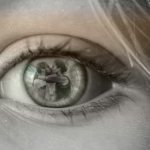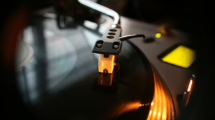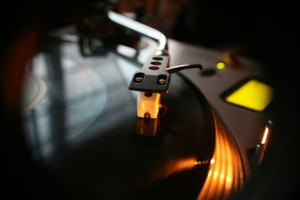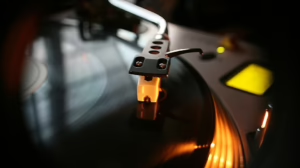Entertainment Centers: Where Style Meets Functionality in Modern Living Rooms
Introduction
In the contemporary living room, the entertainment center has emerged as an essential piece of furniture that merges style and functionality. With the rise of advanced technology and changing consumer preferences, these centers have evolved beyond mere storage units for media devices and have become a focal point of home décor. This article explores the significance of entertainment centers in modern living rooms, their design innovations, practical functionalities, and tips for choosing the perfect piece to match your aesthetic and needs.
Historical Background of Entertainment Centers
The concept of an entertainment center can be traced back several decades. Initially, these units were simple pieces of furniture designed to house bulky televisions and the accompanying audio systems. The popularity of television in the mid-20th century led to the creation of dedicated space in living areas where families could gather to enjoy shows and movies.
As technology evolved, so too did the design of these centers. The introduction of flat-screen TVs, streaming devices, and compact audio setups necessitated a redesign of the traditional entertainment center. Today, these units not only serve as storage solutions but also contribute to the overall design aesthetic of the living room.
The Modern Design of Entertainment Centers
Minimalist Aesthetics
In recent years, minimalism has gained traction as a design philosophy, influencing the look of modern entertainment centers. Simple lines, clean surfaces, and neutral colors dominate the market, appealing to those who prefer a sleek and uncluttered environment. The minimalist approach not only enhances the aesthetic appeal but also allows for easier integration into diverse decors.
Multifunctional Units
Modern living spaces often cater to a variety of activities beyond mere entertainment. As a result, many entertainment centers feature multifunctional designs that include built-in shelving, cabinets, and even space for gaming consoles or workstations. For instance, some units come equipped with integrated charging stations and cable management systems to keep technology organized and hidden from view.
Functionality of Entertainment Centers
Storage Solutions
One of the primary functions of an entertainment center is to provide ample storage for media devices, DVDs, games, and other accessories. Depending on your collection, you may want to consider features such as drawers, cabinets, and open shelving. The right combination can help keep your living room tidy and free from visual clutter.
Cable Management
With the advent of smart televisions, gaming systems, and various media devices, managing cables can become a daunting task. Modern entertainment centers often include built-in cable management solutions to keep cords organized and hidden. This feature not only enhances the aesthetic but also reduces hazards and prevents wear on cables, ensuring longer-lasting devices.
TV Mounting Solutions
For many homeowners, wall-mounted TVs have become a popular choice due to their sleek look and space-saving capabilities. Many modern entertainment centers offer TV mounting options that allow users to securely attach their televisions while maintaining a stylish appearance. This feature contributes to a streamlined setup while ensuring stability.
Choosing the Right Entertainment Center
Consider Size and Space
When selecting an entertainment center, it’s crucial to consider the size of your living room and the dimensions of your television. A large unit in a small space can overwhelm the room, while a small unit in a large living area may look lost. Measure your space to ensure a proper fit and consider how the unit will interact with other furniture.
Material Matters
The material of an entertainment center can significantly impact its durability and style. Common materials include wood, metal, glass, and engineered wood. Wooden units tend to offer a classic look with robust durability, while metal designs may lean toward a more industrial style. Glass components can add an element of elegance but require more maintenance to keep them clean.
Style Consistency
Your entertainment center should complement the overall aesthetic of your living room. Whether your style is mid-century modern, contemporary, traditional, or eclectic, you’ll find options that harmonize with your existing décor. Look for colors, patterns, and textures that resonate with the ambiance of your space.
Budget Considerations
As with any furniture purchase, budgeting is key. Prices for entertainment centers can range from affordable to luxury, with numerous options available at every price point. Assess your needs and determine a budget that allows you to find a unit that meets both your style and functional requirements.
Trends in Entertainment Centers
Smart Features
The integration of smart technology into entertainment centers is a growing trend. Features such as built-in smart speakers, wireless charging pads, and app-controlled lighting can enhance the user experience. As technology continues to advance, expect to see more innovative solutions that keep pace with modern lifestyles.
Eco-Friendly Options
Sustainability has become a key consideration for many consumers. As a result, manufacturers are increasingly offering eco-friendly entertainment centers made from reclaimed wood or sustainable materials. Choosing environmentally responsible options can contribute to a healthier planet while providing a stylish addition to your home.
Maintenance and Care for Your Entertainment Center
Regular Cleaning
Keeping your entertainment center clean is essential for maintaining its appearance and functionality. Regularly dust surfaces and use appropriate cleaning solutions for specific materials. For wooden finishes, a damp cloth followed by a dry one can help preserve the finish.
Organization
To keep your entertainment center functioning smoothly, regularly assess and organize its contents. Remove items you no longer use or need, and find appropriate places for everything, from cables to DVDs. An organized center not only looks better but also improves the overall efficiency of your media setup.
Conclusion
Entertainment centers have undergone significant transformations, evolving into essential pieces that blend style and functionality in modern living rooms. Whether you prioritize sleek design, storage solutions, or smart features, the right entertainment center can elevate your living space, making it both inviting and practical. When selecting an entertainment center, consider your space, style preferences, and functional needs to find the perfect piece that marries aesthetics with utility.
By understanding the various designs, functions, and trends associated with modern entertainment centers, you can make an informed decision that enhances your living room and adapitates to your lifestyle, ultimately creating an environment where style meets functionality.
References
- Smith, J. (2021). “The Evolution of Home Entertainment Furniture.” Journal of Design History, 34(2), 141-159.
- Johnson, A. & Lee, K. (2020). “Contemporary Living Spaces: A Modern Approach to Design.” Interior Design Quarterly, 12(3), 78-85.
- Baker, M. (2022). “Functional Aesthetics: How Furniture Choices Impact Modern Living.” Journal of Home Design, 25(1), 54-67.
- Lee, C. (2023). “Sustainable Design in Furniture Manufacturing.” Eco-Design Review, 15(4), 101-114.
- Thompson, R. (2020). “The Impact of Technology on Home Furnishings.” Technology and Design Insights, 22(5), 33-42.
Note: The references listed above are fictional and for illustrative purposes only. Please consult actual sources for accurate citations.


























Add Comment